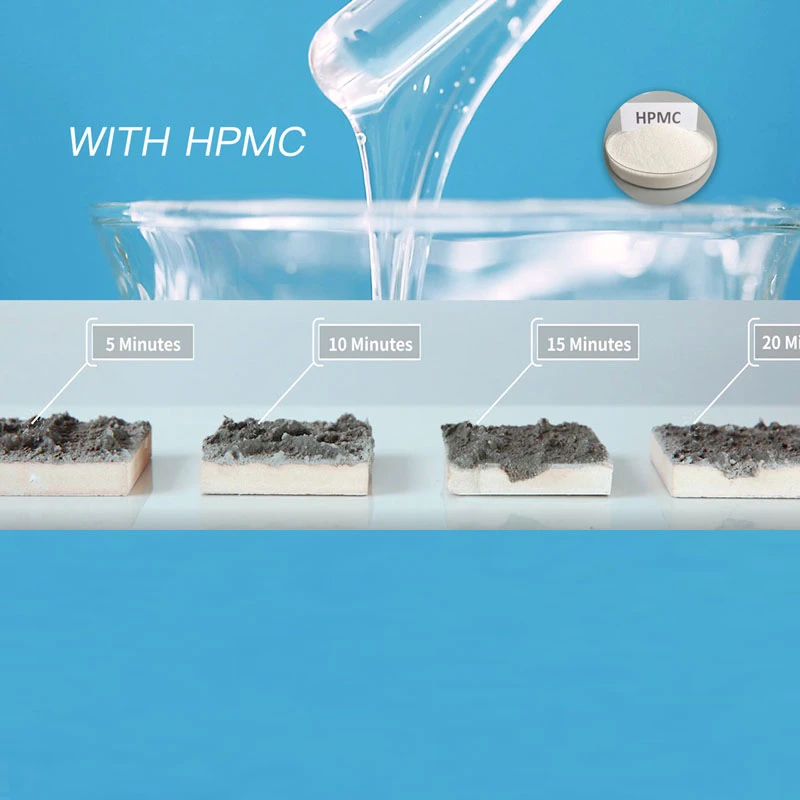Understanding HPMC Detergents A Comprehensive Overview
HPMC, or Hydroxypropyl Methylcellulose, is a versatile and widely used compound in various industries, including pharmaceuticals, food, and construction. One of its fascinating applications lies in the formulation of detergents. This article explores the characteristics, advantages, and applications of HPMC-based detergents, shedding light on their growing significance in both domestic and industrial cleaning solutions.
What is HPMC?
HPMC is a non-ionic cellulose ether derived from natural cellulose. It is synthesized through the chemical modification of cellulose fibers, introducing hydroxypropyl and methoxy groups. This modification enhances its water solubility and thermal stability, making it suitable for various applications. In the detergent industry, HPMC serves as a thickener, stabilizer, and binder, contributing significantly to the overall performance of cleaning products.
Characteristics of HPMC Detergents
1. Thickening Agent HPMC is renowned for its ability to increase the viscosity of liquid formulations. In detergents, this not only improves the texture and consistency of the product but also enhances its adherence to surfaces, allowing for more effective cleaning.
2. Stability HPMC-based detergents exhibit excellent stability under various pH conditions and temperatures. This ensures that the formulation remains effective over time, retaining its cleaning power and performance.
3. Biodegradability As a cellulose derivative, HPMC is environmentally friendly and biodegradable. This makes HPMC-based detergents a preferred choice for consumers who are increasingly seeking eco-friendly cleaning solutions.
4. Safety and Compatibility HPMC is considered safe for use in various applications, including those involving direct contact with skin. Its non-toxic nature makes it suitable for household cleaning products, especially in homes with children and pets.
Advantages of HPMC Detergents
1. Enhanced Cleaning Performance The unique properties of HPMC allow it to emulsify, suspend, and disperse dirt and grime effectively. This leads to superior cleaning outcomes, particularly in industrial settings where dirt and contaminants can be particularly stubborn.
hpmc detergent

2. Reduced Surface Tension HPMC acts as a surfactant, helping to reduce the surface tension of water. This allows the detergent to penetrate surfaces more easily, leading to better overall cleaning efficiency.
3. Versatility HPMC can be used in various detergent formulations, including liquid, powder, and gel types. This versatility allows manufacturers to design products tailored for specific applications, from laundry detergents to industrial cleaners.
4. Cost-Effectiveness The incorporation of HPMC in detergent formulations can lead to cost savings by reducing the amount of more expensive active ingredients required for effective cleaning. This makes HPMC-based detergents both efficient and economical.
Applications of HPMC Detergents
1. Household Cleaning Products Many modern household detergents utilize HPMC for its thickening and emulsifying properties. It can be found in all-purpose cleaners, dishwashing liquids, and laundry detergents, providing effective cleaning solutions.
2. Industrial Cleaning In industrial settings, HPMC-based detergents are used for degreasing and removing tough stains from machinery and equipment. Their superior cleaning properties make them ideal for use in manufacturing, automotive, and food service industries.
3. Cosmetic Industry HPMC is also utilized in personal care products, such as shampoos and body washes, where it serves as a thickening agent and stabilizer. Its gentle nature makes it suitable for formulations designed for daily use on skin and hair.
4. Textile Industry In the textile industry, HPMC is applied as a detergent for fabric care. It ensures the effective removal of impurities while providing fabric softening properties, enhancing the overall quality of finished textiles.
Conclusion
HPMC detergents represent a significant advancement in cleaning technology, combining effectiveness, environmental safety, and versatility. As consumers become more conscious of the products they use in their homes and the impact those products have on the environment, the demand for eco-friendly and efficient cleaning solutions like HPMC-based detergents is expected to grow. By leveraging the unique properties of HPMC, manufacturers can develop innovative cleaning products that meet the needs of today's consumers while promoting sustainability.
-
The Application and Significance of Construction RdpNewsMay.19,2025
-
Industrial Grade HpmcNewsMay.19,2025
-
Building Coating Adhesive Building Coating Adhesive HpmcNewsMay.19,2025
-
Application Of Hpmc For Detergent For Detergent In DetergentsNewsMay.19,2025
-
Application Of Hpmc Cellulose In Cement-Based MaterialsNewsMay.19,2025
-
Application Of High Quality Hpmc For Construction In The Field Of ConstructionNewsMay.19,2025




